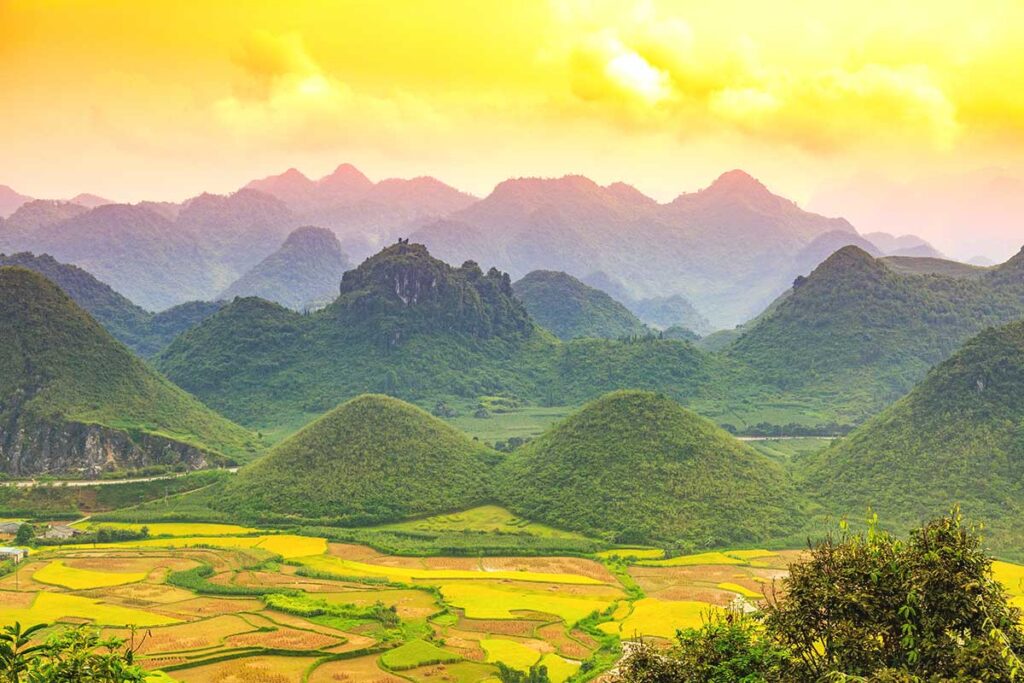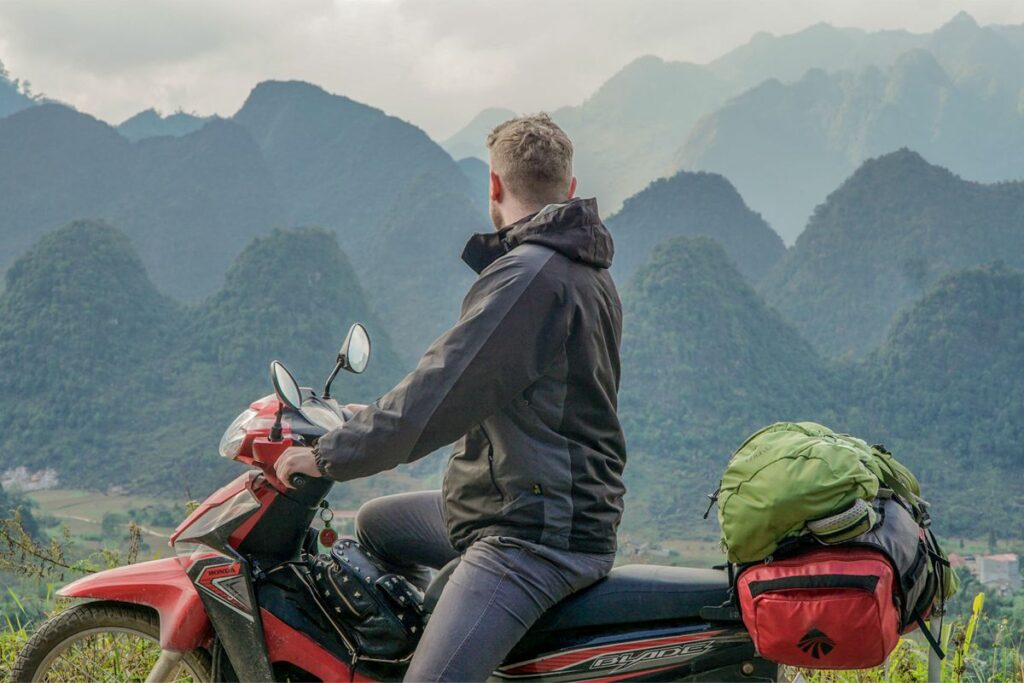What are the Quan Ba Twin Mountains?
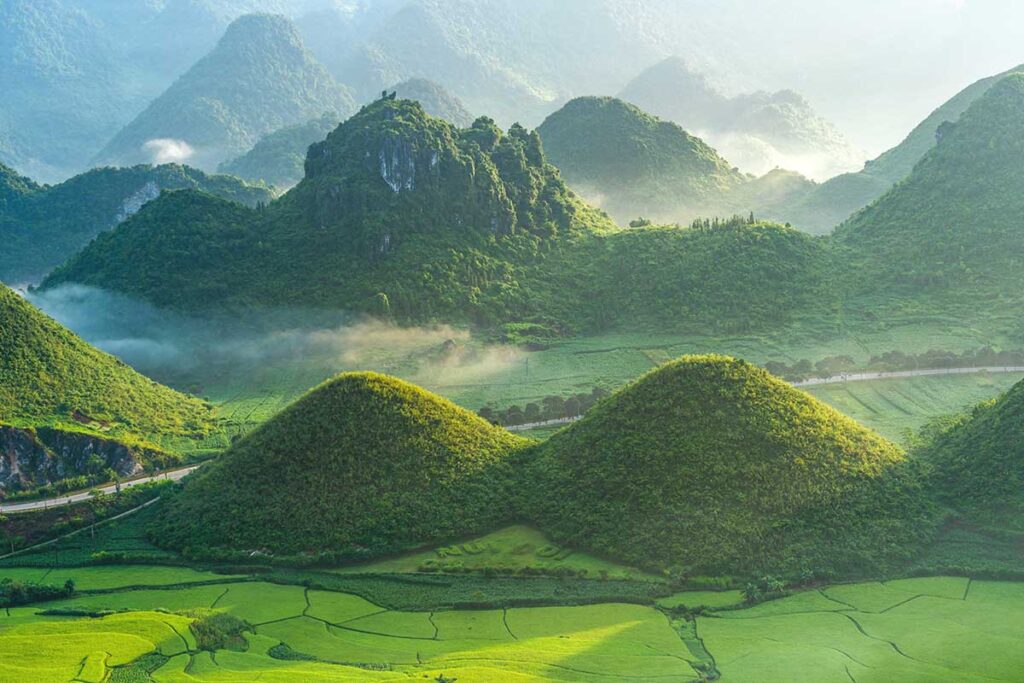
The Quan Ba Twin Mountains are two perfectly rounded, side-by-side hills rising from the valley floor just outside Tam Son town in Quan Ba District, Ha Giang. Their smooth, symmetrical shape stands in sharp contrast to the rugged limestone peaks and layered rice terraces around them—earning them the nickname “Fairy Bosom Mountains.” Set against the backdrop of the Dong Van Karst Plateau, they’re one of the most photographed stops along the Ha Giang Loop. You can spot them from the viewpoint on the Quan Ba Pass, where the panoramic view stretches far into the valley, especially beautiful on clear mornings or misty days.
The legend behind the Twin Mountains
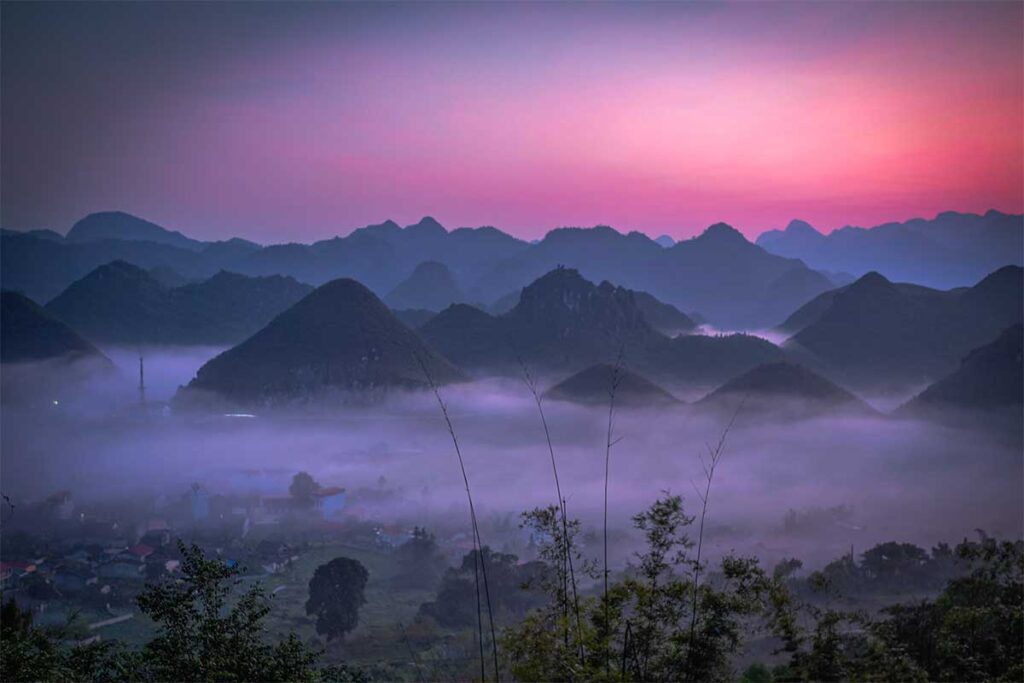
According to a Hmong legend, a fairy named Hoa Dao fell in love with a Hmong man after hearing the sound of his flute echoing through the mountains. She descended from the heavens to be with him, and together they had a child. But when the Jade Emperor discovered her absence, he forced her to return to the sky. Moved by love for her child, she left behind her breasts to provide milk for the baby. These turned into the two rounded hills that today stand as the Quan Ba Twin Mountains — also known as the Fairy Bosom Mountains. Locals say the land has been fertile and lush ever since, nourished by the fairy’s gift.
Twin Mountains Viewpoint on Quan Ba Pass
1. The Quan Ba Pass – Gateway to the highlands
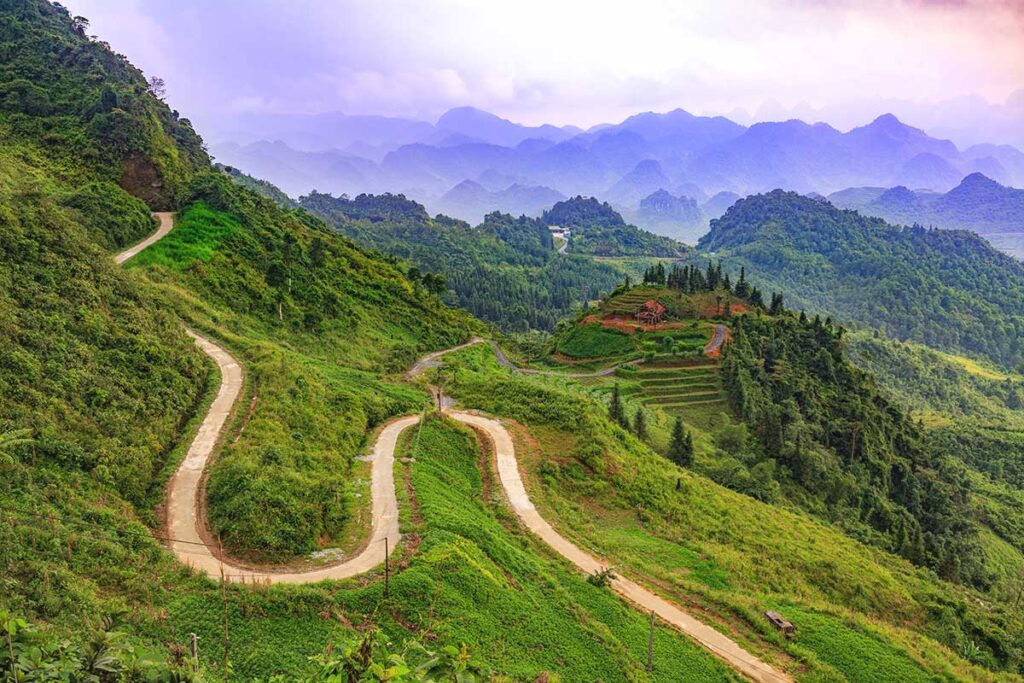
If you’re coming from Ha Giang City and starting the Ha Giang Loop, the Quan Ba Pass — also known as Heaven’s Gate — is one of the first dramatic mountain stretches you’ll encounter. This winding pass marks the entrance to the Dong Van Karst Plateau, offering panoramic views of towering peaks and deep valleys. At the summit, there’s a small coffee shop where you can enjoy a break with a stunning view over the mountains — although the Twin Mountains are not yet visible from here.
Tours that include a stop at Quan Ba Twin Mountains
Our Ha Giang Loop tours include a stop at the iconic Quan Ba Twin Mountains. Browse all tour options with transfers, local guides, and scenic highlights throughout the loop. Easy to book and ideal for exploring the region.
2. Parking area and stairs to the viewpoint
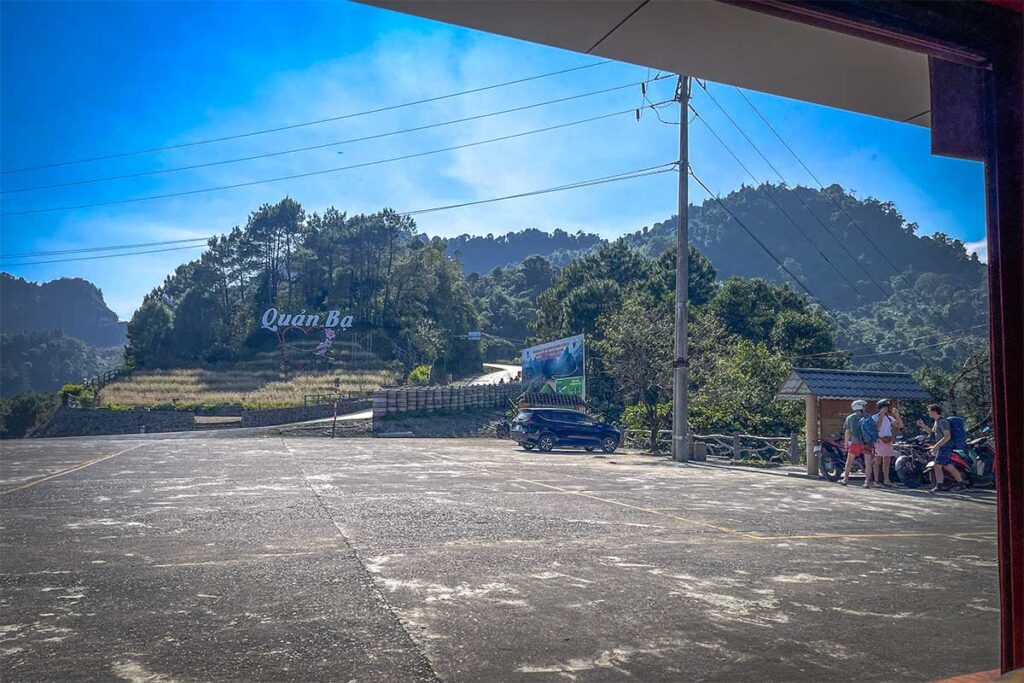
As you descend the pass heading toward Tam Son town, keep an eye out for a small parking area on your left, roughly halfway down. You’ll see a few simple stalls, and while it may not look like much at first, this is the main access point to the Twin Mountains viewpoint. Park your vehicle and follow the short staircase up the hill — the climb takes less than 10 minutes and there’s no entrance fee.
3. The viewpoint over the Twin Mountains
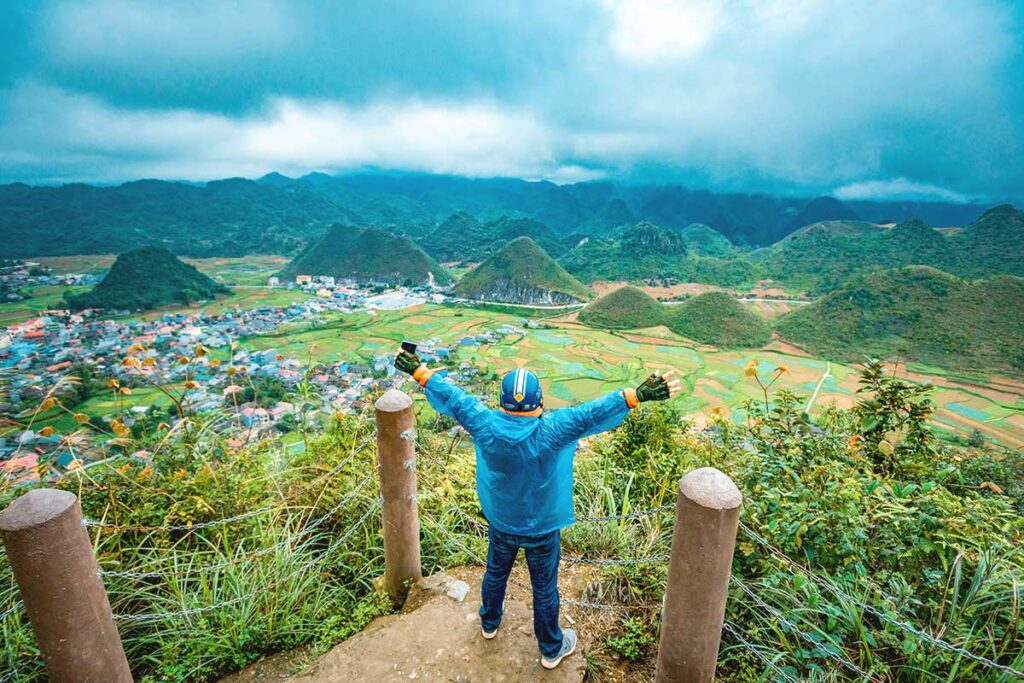
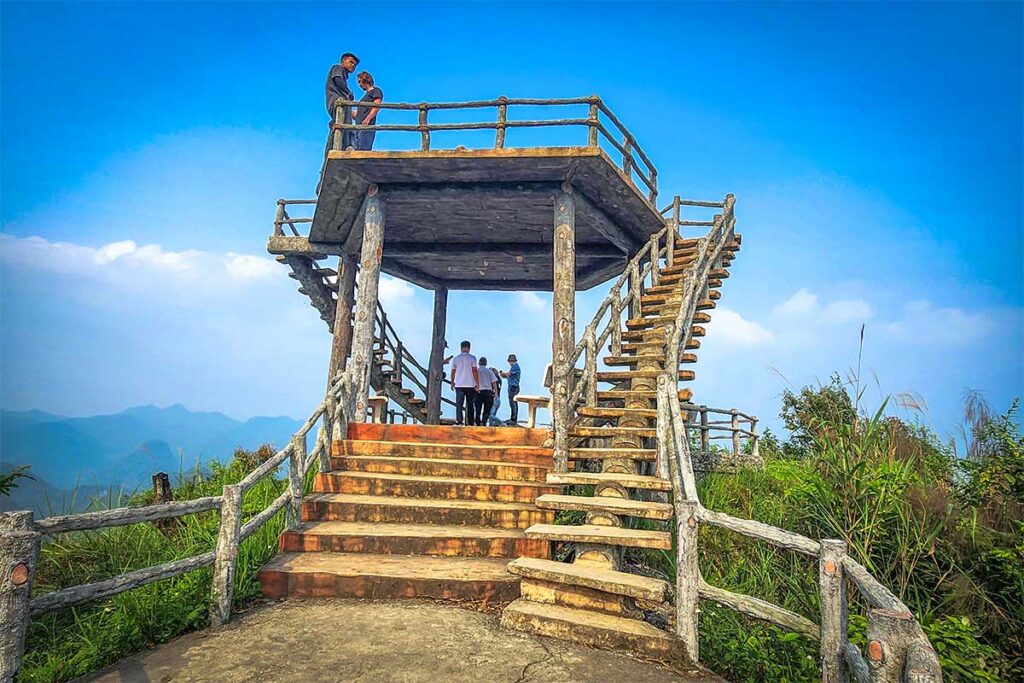
At the top, the Quan Ba Twin Mountains appear directly below you — a stunning sight framed by rice fields and the surrounding karst landscape. There’s a small viewing tower just a few meters high that gives you a better vantage point, especially if bushes or trees partially block the view. From here, you can clearly see the unique twin peaks with Tam Son town nestled just beside them — a great photo spot and a refreshing change of pace from the road.
Nearby sights
From the Twin Mountains viewpoint, you can also explore much more in the surrounding area. It’s easy to spend half a day here visiting nearby villages, viewpoints, and local sights — or even stay overnight in Tam Son or a nearby village with a cultural homestay. If your time is limited, choose one or two stops as you continue your Ha Giang Loop. Some of the best options include:
- Quan Ba Heaven Gate – Panoramic viewpoint at the top of the pass, overlooking the valley and surrounding limestone mountains.
- Nam Dam Village – A traditional Dao village known for its stone houses, warm homestays, and local cultural experiences.
- Lung Khuy Cave – A short uphill hike leads to a well-developed cave with impressive stalactites and a cool interior.
- Lung Tam Weaving Village – Visit this small Hmong village to see handmade hemp weaving and natural dye techniques in action.
- Weekly markets – Experience colorful ethnic minority markets in Tam Son and nearby villages, typically held on weekends or fixed lunar dates.
Visiting tips
Dress for the mountain temperatures
Even on warm days in Ha Giang City, the weather at Quan Ba Pass and the Twin Mountains viewpoint can be much cooler due to the altitude. Whether you’re traveling by motorbike or car, it’s a good idea to have something warm within reach for stops along the way.
Bring cash
There’s no entrance fee for the viewpoint, but it’s smart to carry cash. The coffee shop at the top of Quan Ba Pass is a great place for a break, and local stalls at the Twin Mountains parking area often sell handmade souvenirs from ethnic minority vendors — most don’t accept card payments.
Plan a lunch stop in Tam Son
After visiting the viewpoint, you’ll descend into Tam Son, one of the larger towns along the Ha Giang Loop. It’s a common lunch stop. If you skip it, it could be hours before reaching another town with proper food options. If you’re too early for lunch, explore nearby places like Nam Dam Village or Lung Khuy Cave first.
Best time to visit
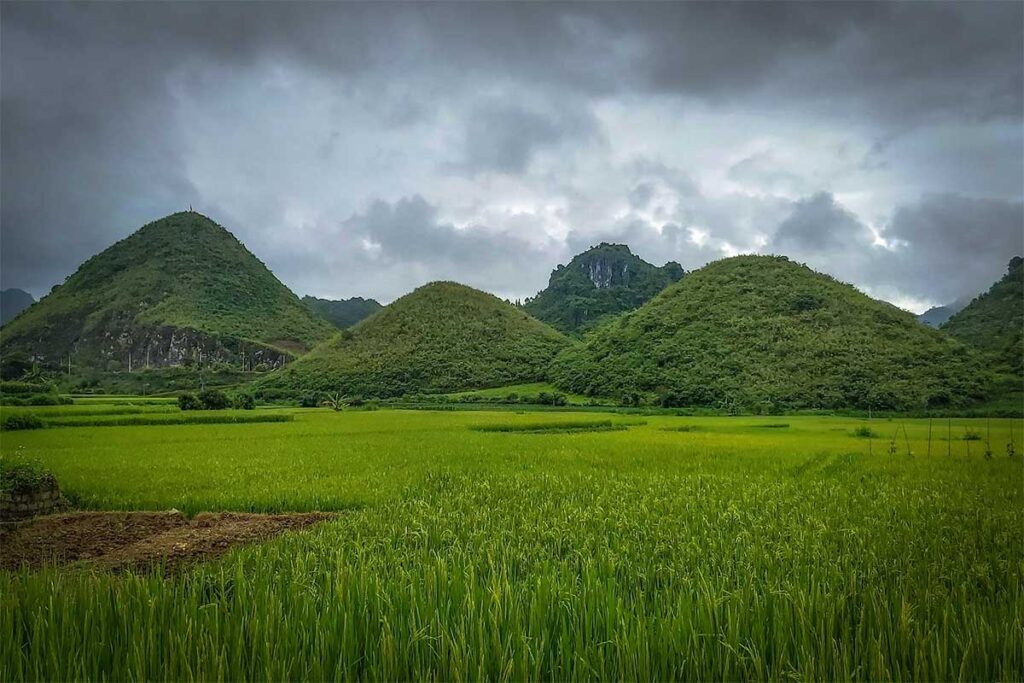
The Twin Mountains are scenic year-round, but the rice fields around them add extra charm during the growing seasons. Expect green fields from February to April and again from June to September, with golden yellow views toward the end of each cycle. For ideal weather, see our guide: Best time to do the Ha Giang Loop.
